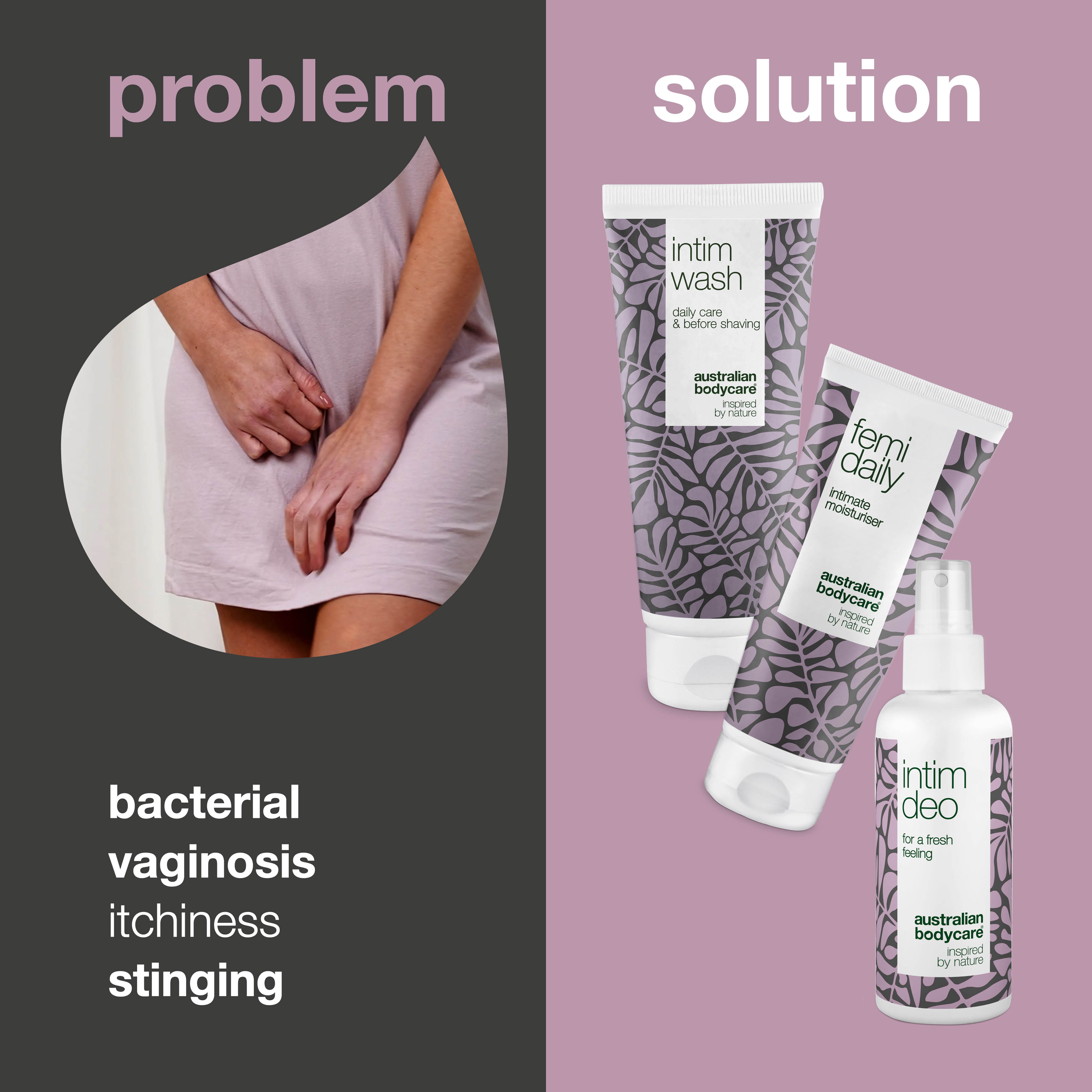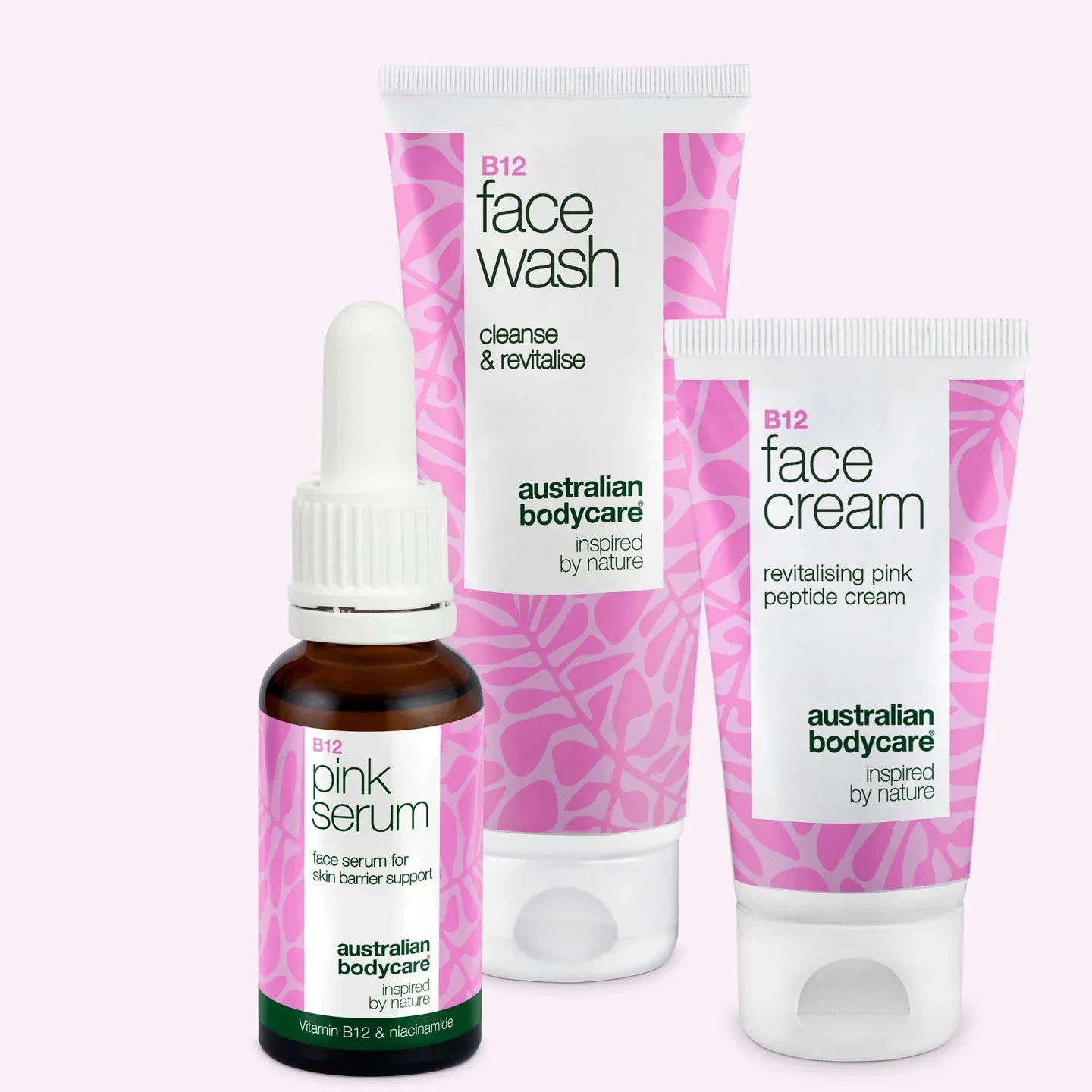Vulvitis – What is it and how do you get rid of it?
A woman's genital area is sensitive and can experience a range of discomforts. It is a delicate balancing system that controls the organisms in the vagina so that everything works optimally. However, for the vast majority of women, at some point in their lives, the environment will become unbalanced, which can lead to vulvitis.
Jump to: How to treat vulvitis
But what is vaginitis? How do you know if you have it? You'll learn all about it here.
Table of contents
What is vulvitis?
Vulvitis is an inflammatory condition of the vagina. A woman's vagina is made up of a unique community of lactic acid bacteria and other bacteria, fungi and microorganisms living side by side.
With the right combination of all components, a natural and healthy bacterial flora is maintained in the vagina, which manifests itself as a continuous flow of vaginal secretions.
This secretion is commonly referred to as vaginal discharge. But outside bacteria can take over and destroy the natural flora of bacteria, and then there's trouble.
Vulvitis is an inflammation of the vagina that occurs when the vagina becomes infected with bacteria or fungi - and it typically causes discomfort such as increased and smelly vaginal discharge.
What is discharge?
But what exactly is vaginal discharge? A vaginal discharge is a fluid from the mucous membranes of the vagina combined with dead skin cells from the womb. The fluid comes out of the vagina and is a way for it to cleanse itself naturally.
This is why vaginal discharge is completely normal - even on a daily basis. And all women, regardless of age, experience vaginal discharge to some degree. The amount of vaginal discharge varies greatly among women, and therefore there is no definitive rule as to what constitutes a normal amount of discharge. However, normal vaginal discharge is characterised by a slightly slimy, clear or white consistency.
In addition to being an expression of the vagina's self-cleansing function, vaginal discharge is also a defence mechanism of the vagina. The microorganisms and lactic acid bacteria in the vagina together form a defence mechanism that prevents foreign bacteria from finding their way further up the abdomen to the cervix, ovaries and fallopian tubes.
The environment in the vagina is acidic and normally ranges between 3.8-4.2 on an acid-base scale. The large amount of lactic acid bacteria therefore helps to keep it acidic, as an acidic environment is more resistant to foreign and harmful bacteria.
Vaginitis is an inflammation of the vagina that occurs when the vagina becomes infected with bacteria or fungi - and it typically causes discomfort such as increased and foul-smelling vaginal discharge.
What does vulvitis feel like?
The symptoms of vulvitis can be many and varied. But common to vulvitis are changes in vaginal discharge, itching, irritation and sometimes slight bleeding from the vagina. Inflammation of the vagina therefore leads to many problems in the lower abdomen.
Itching in and around the vaginal opening is uncomfortable, and when you scratch, it can be a vicious circle to get into, because it only intensifies the itching sensation.
Vulvitis can also cause burning during urination and sex, and it can also cause pain or a feeling of heaviness in the lower abdomen.
Vaginitis or inflammation of the vagina can therefore cause discomfort in the form of changes in the colour, consistency and smell of the discharge, burning and painful sensations, or both.
The reason why you get vulvitis
There can be several reasons why you get vulvitis. But in the vast majority of cases, it is caused by a vaginal imbalance or an infection. Vulvitis can be divided into different types of 'inflammation', and therefore the cause of vaginitis also depends on the type you have. Below you will find the most common types of vulvitis.
Vaginal Thrush
Vaginal thrush is a common condition affecting a large number of women. It is estimated that up to 75% of women will be bothered by vaginal thrush during their lifetime. In the vast majority of cases, in fact around 80% of cases, this type of vaginal thrush is caused by a yeast infection with 'Candida albicans'.
The yeast naturally lives in the vaginal mucosa together with lactic acid bacteria, microorganisms and other naturally occurring bacteria in the vagina. But if the growth conditions in the vagina increase, the fungi will have ample opportunity to overgrow - and then you get vaginal thrush with symptoms such as increased vaginal discharge, which is often white, thick and lumpy.
The discharge can be compared to a cottage cheese-like consistency. The discomfort also often manifests itself as itching and burning in the vagina.
Vaginal thrush typically occurs after penicillin treatment with antibiotics. The treatment kills the lactic acid bacteria that keep the balance of the vagina stable and acidic, making it resistant to bacteria and infections.
This gives the fungi free rein to multiply explosively.
Bacterial vaginosis
With bacterial vaginosis comes an imbalance in your vaginal environment. When the natural balance is upset, it can cause strong fishy odours from the vagina and a greyish-looking discharge.
It is usually the bacterium 'Gardnerella vaginalis' that is allowed to dominate, so that the lactic acid bacteria cannot do their defence work properly by keeping the environment regulated and acidic.
The bacterium grows if the acidic pH is reduced and becomes more alkaline instead. For example, the pH of the vagina can become less acidic when vaginal discharge and semen are mixed during intercourse.
This is because semen is alkaline and can therefore disturb the acidic environment and cause intimate discomfort.
Trichomonas
If you suddenly notice that your vaginal discharge changes to yellow or greenish in colour, it could be a sign of infection with the Trichomonas parasite. Trichomonas is a type of vaginal thrush that can even give the discharge a foul odour, accompanied by burning and pain in and around the vagina.
The parasitic infection is sexually transmitted. It is a rare condition in Denmark, but is one of the most common infections in the rest of the world.
Vaginal dryness and irritation
Another form of vaginal discomfort is 'Astrophic vaginitis', which refers to vaginal dryness and irritation caused by reduced moisture in the vagina. Older people in particular experience a thinning of the mucous membranes after the menopause, resulting in less vaginal discharge. This changes the composition of bacteria in the vagina, reducing defence mechanisms and can lead to bacterial infections.
The dry and irritated mucous membranes can cause major discomfort such as itching and even burning, stinging sensations in the vagina.
ALSO READ: Relieve dry mucous membranes during menopause
Symtoms of vulvitis
In general, vaginal discharge does not cause any complications other than the fact that it can be painful, uncomfortable and embarrassing.
However, pregnant women should pay special attention to Trichomonas infection and bacterial flora imbalance with bacterial vaginosis, as both types of vulvitis can lead to premature labour and thus weaken the newborn.
This is how you treat vulvitis
If you have already developed vulvitis, there are both suppositories and lactic acid pills that can help restore the defence mechanisms in the vagina. You can buy them from local pharmacies.
Video: use the right intimate care for vulvitis
You can also generally relieve intimate problems with gel. For example, Australian Bodycare's Femigel is suitable for this purpose. It treats itching, burning and unpleasant odour in the intimate area, while Australian Tea Tree Oil counteracts bacteria. The gel is pH regulated to help restore a natural environment in the intimate area. In a clinical trial, 9 out of 10 women achieved good results with the gel.
The best treatment for vulvitis is, of course, prevention. You can minimise the risk of vaginal inflammation by taking the following precautions:
- Ensure good daily intimate hygiene with a mild soap for this purpose. For example, use Intimate Wash from Australian Bodycare, which gently washes the area free of bacteria while keeping the skin moisturised so it doesn't become irritated.
- Use a gel to help maintain the natural balance and bacterial flora of the external genital area. Femi daily is a gel that, when used daily around the vaginal opening, effectively counteracts bacteria, helping to regulate moisture levels and maintain harmony. The gel has been dermatologically tested and is therefore suitable even for people with sensitive skin, and it is also pH-regulated for this purpose.
- Avoid using panty liners or sanitary towels as far as possible, as they quickly create a breeding ground for the growth of foreign bacteria.
- Never wipe from behind towards the front when using the toilet - if you do, you will transfer bacteria from the rectum to the vagina where they can multiply.
- Make sure to use cotton underwear that allow the intimate area to breathe. Therefore, avoid synthetic panties and tight-fitting trousers.
- Use a condom during intercourse to make sure that the alkaline semen does not mix with your vaginal discharge and risk imbalancing the bacterial flora in your vagina.





